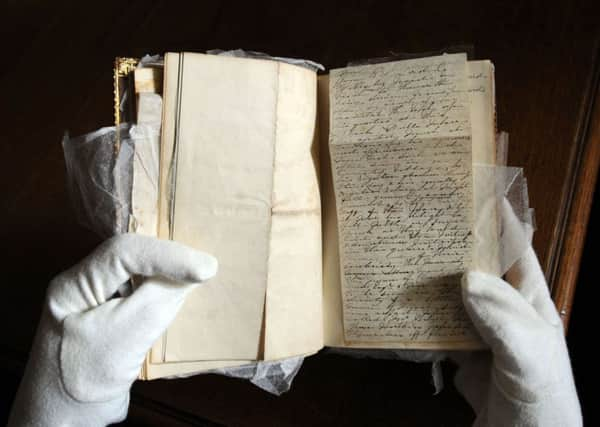Rare Brontë book reveals unknown manuscripts


But the fact that the “treasured” book belonging to Maria Brontë once survived a shipwreck on the Devonshire coast to come to Yorkshire is perhaps one of the least remarkable aspects of the Brontë Parsonage’s latest acquisitions.
For its pages are covered in annotations by the whole Brontë family - and hidden inside were two very special, unpublished manuscripts by Jane Eyre author Charlotte Brontë, who was just five years old when her mother died in 1821.
Advertisement
Hide AdAdvertisement
Hide AdThe book, a copy of Robert Southey’s The Remains of Henry Kirke White, was sold at a sale held in the Parsonage in Haworth following the death of Patrick Brontë in 1861 and spent much of the last century in a private collection in the United States


It was acquired by the museum after it secured £170,000 from the National Heritage Memorial Fund (NHMF) last winter, in addition to funding from the V&A Purchase Grant Fund and the Friends of the National Libraries.
After months of waiting, it returned to Yorkshire earlier this year when the Parsonage Museum’s principal curator Ann Dinsdale, and her team, began the painstaking process of discovering its secrets.
Now, visitors attending the museum’s Treasure Troves sessions can see it for the first time before it goes on public display at the Parsonage next year.
Advertisement
Hide AdAdvertisement
Hide Ad“Mrs Brontë’s book is one of the most significant Brontë items to come to light in many years. It was clearly well-used and of great sentimental value to the Brontë children, who lost their mother while they were very young,” Ms Dinsdale said.


“Very few of Mrs Brontë’s possessions survive and we’re very excited to have the book back at Haworth.”
The book was contained in a box of her property that was being shipped from Maria’s home in Penzance by her sister shortly before her marriage to Patrick Brontë in 1812. The ship was wrecked, but the box survived, and the book eventually made its way to Haworth.
Among the annotations, markings and sketches by various members of the Brontë family are two unpublished manuscripts by Charlotte, a poem and a fragment of prose - which has proved to be quite special. Both concern the imaginary world of Angria, created by Charlotte and her brother Branwell.
Advertisement
Hide AdAdvertisement
Hide AdThe poem, written in “tiny, tiny script”, and the story have been expertly photographed and transcribed at the Museum and could be published next year, Ms Dinsdale said.


“The short prose manuscript is the only example of the fictional world of Angria colliding with the real world of Haworth,” she said. “The character, Lord Charles, comes to Haworth and is put up at the Black Bull pub, where he plies the local undesirables with alcohol and leads them on a rampage through the village.”
The story continues with villagers being dragged out of their beds in the dead of night, and Rev Winterbottom, Haworth’s baptist minister, is among the real people who are flogged in the streets.
“It’s quite a dark and subversive story for a 14 year old to write,” Ms Dinsdale added.
Advertisement
Hide AdAdvertisement
Hide AdAlso included in the book was a letter by Arthur Bell Nicholls, Charlotte’s husband, written shortly after her death in 1855.


Historian and author of the acclaimed biography, The Brontës, Juliet Barker, said: “The book alone is a valuable acquisition because of its rare associations with Mrs Brontë before her marriage to Patrick, but its importance is immeasurably increased by the unpublished manuscripts tipped into it. There could be no better place for it to be preserved for the future than the Brontë Parsonage Museum.”
The book contains Latin inscriptions in Patrick Brontë’s hand stating that this was ‘….the book of my dearest wife and it was saved from the waves. So then it will always be preserved.’
While it belonged to Maria long before her engagement to Patrick, history has revealed a remarkable coincidence.
Advertisement
Hide AdAdvertisement
Hide AdHenry Kirke White, the English poet and subject of the book, a compilation of his works, attended Cambridge University at the same time at Patrick Brontë and knew him.
Kirke White, who was eulogised by Lord Byron, died when he was just 21 years old.